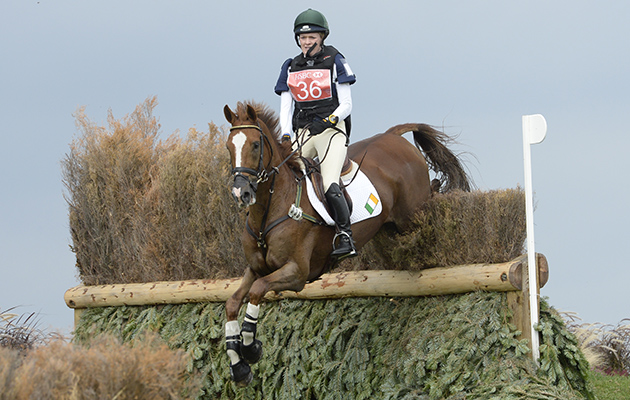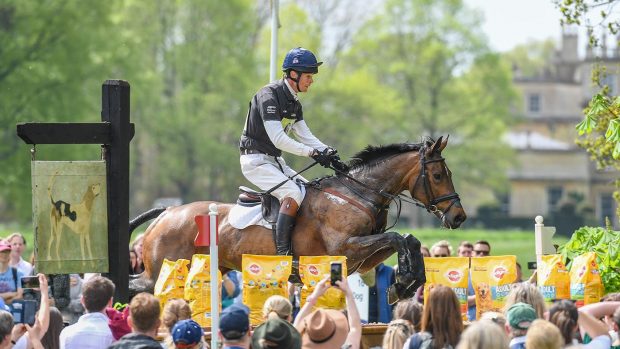The five-star event rider explains how this bounce grid exercise can improve a horse’s jumping technique
Bounce grid exercise
Aim
I use this simple row of four fences on bounce distances with all my horses. It helps to improve their footwork and jumping technique, while allowing the rider to focus on their position. It can add variety to your jump training and is a good exercise where the horse does most of the work, encouraging him to really use himself and work out where to put his feet. It is also a great exercise for creating independence in the horse when he is jumping — he has to work everything out for himself and get himself out of trouble, which ultimately makes him more agile.
The fences don’t have to be high, and you can come in trot to keep it simple. All the rider has to focus on is maintaining the correct position and balance, and then leave the horse alone to do the rest.
Because it is quite a gymnastic exercise, it is also beneficial for improving strength, fitness and suppleness, which is one of the reasons why I use it with my older horses through the winter to keep them ticking over, without making them jump too high.
The bounce grid exercise

1. Depending on the age and experience of the horse, start with poles on the floor where the bounces would be. The poles should be placed at 3.6m (12ft) intervals. If your poles are normal competition length, they’re 12ft long, making them the same length as the distance, so it’s really easy to measure. The first pole should be 3ft closer to the second, as this will act as a place pole for the first fence. If the horse is young, I suggest trotting over the poles on the floor a few times first to get them used to where everything will be.
2. Raise the second pole — about 60-80cm, depending on experience — and approach in trot, as it gives the horse time to assess the jump and prevents him from using speed to create power.
3. Raise each fence, one at a time, until all fences are up and there are three bounces, allowing the horse to jump through the grid each time.
4. If the horse is jumping down the grid with ease and confidence, add an oxer one stride after the final bounce. Continuing to approach in trot means the horse has to create his own power without rushing, usually resulting in a better technique.
Tips and pitfalls
- Once the horse understands what is being asked, leave him as much as you can safely, with just a gentle contact on the rein and a light lower-leg aid. This will allow him to use himself, ensuring he’s not relying on the rider.
- Make sure to approach at the correct speed, which should be a forward-thinking trot. Too slow and the horse won’t have enough energy, too fast and he won’t have time to place his feet correctly.
- Be wary of getting in front of the horse when jumping bounces. He will need room to lift up his shoulders, so a light seat position is preferable to leaning forward.
You might also be interested in:

Sarah Bullimore’s figure-of-eight jumping exercise for focus
The five-star eventer shows how the figure-of-eight jumping exercise can help develop balance, rhythm and the ability to land on

Using cavaletti to improve the horse’s canter and balance

Subscribe to Horse & Hound this spring for great savings
Horse & Hound magazine, out every Thursday, is packed with all the latest news and reports, as well as interviews, specials, nostalgia, vet and training advice. Find how you can enjoy the magazine delivered to your door every week, plus options to upgrade your subscription to access our online service that brings you breaking news and reports as well as other benefits.




